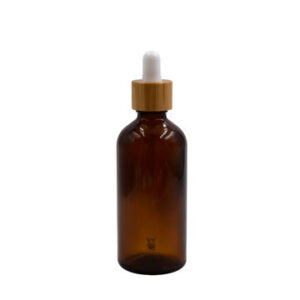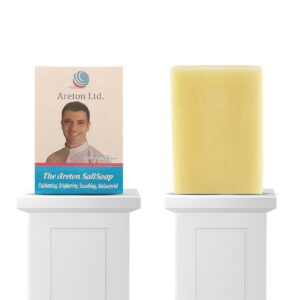[vc_row][vc_column][vc_column_text]Salicylic acid is a beta hydroxy acid. It’s well-known for reducing acne by exfoliating the skin and keeping pores clear.
You can find salicylic acid in a variety of over-the-counter (OTC) products. It’s also available in prescription-strength formulas.
Salicylic acid works best for mild acne (blackheads and whiteheads). It can also help prevent future breakouts.
Keep reading to learn how salicylic acid helps to clear acne, what form and dosage to use, and potential side effects to be aware of.[/vc_column_text][/vc_column][/vc_row][vc_row][vc_column][vc_column_text]
In the over-the-counter battle against breakouts, there are a few key ingredients you should know about, and salicylic acid is at the top of that list. Simply speaking, salicylic acid is one of acne’s biggest enemies. You reach for a spot treatment within the second you see a zit invading your face. You slather it on a blemish overnight and you might wake up in the morning with a pimple that is dried up and much less noticeable. But, what does salicylic acid do for the skin, and what are the best ways to reap its benefits?
[/vc_column_text][/vc_column][/vc_row][vc_row][vc_column][vc_column_text]
What is salicylic acid?
First off, let’s establish what salicylic acid is. Salicylic acid is derived from willow bark, says cosmetic chemist Ron Robinson, and it belongs to a class of ingredients called salicylates. It’s structure is a little complicated, but understanding it is important to learning why (and how) it works so well.
When it comes to skin-care products, there are two classes of acids you’ll see often: beta hydroxy acids (BHAs) and alpha hydroxy acids (AHAs). “Salicylic acid is a beta hydroxy acid,” says cosmetic chemist Randy Schueller. “[This] means the hydroxy part of the molecule is separated from the acid part by two carbon atoms, as opposed to an alpha hydroxy acid where they’re separated by one carbon atom.”
[/vc_column_text][/vc_column][/vc_row][vc_row][vc_column][vc_column_text]Are you still with us? Good, because this is where it gets fun. “This structure is important because it makes salicylic acid more oil-soluble so it can penetrate into the pores of the skin,” Schueller says.
Both alpha and beta hydroxy acids exfoliate the skin, but AHAs are water-soluble, while BHAs are oil-soluble, explains New York City-based board-certified dermatologist Sejal Shah, M.D. Examples of AHAs, for reference, include glycolic and lactic acids.
“Generally, oil-soluble ingredients penetrate through the lipid layers between the skin cells more readily,” Dr. Shah explains. In other words, oil-soluble ingredients can penetrate the skin at a deeper level than their water-soluble counterparts.
Robinson sums up their differences succinctly: “AHAs work well on the skin’s surface to loosen old, dead skin and reveal fresh newer skin,” he says. “Salicylic acid works deeper [and is] able to penetrate into the pores to unclog them.”[/vc_column_text][/vc_column][/vc_row][vc_row][vc_column][vc_column_text]
What does salicylic acid do for the skin?
Salicylic acid can get deep into your skin to do its job. This quality is precisely what makes it such a potent ingredient for targeting acne — especially for blackheads and whiteheads.
Once it penetrates the skin, salicylic acid “dissolves skin debris that clogs pores, [acts] as an anti-inflammatory, and also helps red, inflamed pimples and pustules go away faster,” explains Naissan O. Wesley, M.D., a board-certified dermatologist in Los Angeles.
The ingredient can penetrate so deeply into skin that actually breaks down the connections between skin cells, according to Schueller and Dr. Wesley. “Once it has penetrated the skin, the acid part of the molecule can dissolve some of the intracellular ‘glue’ that holds skin cells together,” says Schueller.[/vc_column_text][vc_column_text]
Salicylic acid is also an exfoliant.
This breaking down of skin cells promotes exfoliation. Salicylic acid is considered a keratolytic medication, which means that it’s perfect for supreme exfoliation. “Keratolytic medications cause softening and sloughing of the top layer of skin cells,” says Rachel Nazarian, M.D., a board-certified dermatologist in New York City.
Salicylic acid also loosens and breaks apart desmosomes (attachments between cells in the outer layer of skin). “This ‘desmolytic’ action encourages exfoliation of skin and unclogging of pores,” says Sue Ann Wee, M.D., a board-certified dermatologist in New York City.
“One thought etiology of acne is that the skin cells do not behave normally, and rather than sloughing off through a healthy skin cell cycle, they stick together and clog the pores, creating cysts and blackheads,” says Dr. Nazarian. “Salicylic acid aids in removing and loosening these skin cells and helps to dissolve the blackheads.”[/vc_column_text][/vc_column][/vc_row][vc_row][vc_column][vc_column_text]
What is Salicylic Soap?
Salicylic soap is a cosmetic cleansing product containing salicylic acid. Salicylic soap is typically used to treat acne, Anti-blemishblemish, Anti Bacterial, on the face and body, but it may also contain other acne-fighting ingredients such as sulphur. Salicylic soap can be found in any beauty or drugstore that sells cosmetics. 
Salicylic soap gets its name from salicin, a chemical found in willow bark and some herbs like meadowsweet. Salicin, like its willow-bark counterpart aspirin, has anti-inflammatory properties that can soothe and treat a variety of conditions. Originally used to treat fevers, ancient medicine incorporated salicin into compounds, but it was later discovered that high doses of the substance caused serious gastric problems. It is now primarily used to treat skin conditions such as acne and rosacea.
Salicylic soap is frequently recommended as part of a skin care regimen to help reduce acne. A toner, spot treatment, and moisturiser may also be included in the regimen. Salicylic acid is commonly found in all of the products in a treatment line, but the soap is usually the first and one of the most important steps. Salicylic soap, in addition to the cleansing properties of regular soap, provides a boost of acne-fighting salicylic acid to skin at its cleanest and most open state.[/vc_column_text][vc_column_text]It is critical to understand that not all soap is created equal. Read the ingredient lists carefully, as many soaps contain ingredients that can dry out or irritate the skin, or even be counterproductive to acne treatment. Soaps containing alcohol, sodium laurel sulphate, parabens, and a variety of artificial fragrances may irritate sensitive skin. To avoid most irritations, look for soaps that are alcohol-free and contain the fewest ingredients.[/vc_column_text][/vc_column][/vc_row][vc_row][vc_column][vc_column_text]
Salicylic acid works best on blackheads and whiteheads.
Schueller says there are three factors that contribute to acne: an abnormal sloughing off of skin cells, excessive oiliness, and the action of P. acnes bacteria. “Salicylic acid helps with the first cause by dissolving the type of skin debris that clogs pores and causes acne,” he says.
Therefore, salicylic acid is ideal for treating blackheads and whiteheads. “Salicylic acid can directly dissolve the keratin plugs and regulate the skin cells,” says Dr. Nazarian. “It does have some effectiveness against cystic acne due to its antibacterial activity, but less so than the classic blackheads and whiteheads.”[/vc_column_text][/vc_column][/vc_row]

